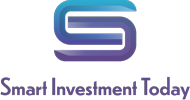In today’s fast-moving business world, few roles are evolving as quickly as HR. Drew Soule knows this better than most.
With more than 15 years of experience in human resources, Drew has helped companies navigate Pre-IPO readiness, mergers and acquisitions, culture shifts, and reorganizations to position businesses for major growth—all through the lens of people.
He doesn’t just talk about HR as a support function. For Drew, it’s a strategic engine that drives performance, shapes culture, and supports transformation at every level.
“HR can’t just react,” Drew says. “We need to be out front, helping the business see around corners.”
Building an HR Career Around Strategy and People
Drew didn’t come into HR to manage forms or run checklists. From the beginning, he was drawn to the bigger picture: how talent, structure, and culture impact business outcomes. Early in his career, he worked closely with executive leaders, helping them connect organizational goals to people strategy.
Over the years, he’s built a toolkit that includes organizational design, executive coaching, and talent planning—all skills that show up again and again in his approach to solving business challenges.
“I always try to link back to impact,” Drew says. “Whether we’re looking at performance management or employee relations, it has to connect to what the company is trying to do.”
HR in Times of Change
Drew thrives in complex and fast moving environments. He’s worked through IPO readiness, M&A integration, and labor relations, helping teams find clarity when everything else feels uncertain. He sees these moments not as obstacles—but as opportunities.
“Change isn’t always comfortable,” he says. “But it’s when real leadership shows up. You find out who’s ready to listen, adjust, and move forward with purpose.”
During one integration effort, Drew helped two merging companies align on a single performance model. It took weeks of collaboration with Legal, Compliance, L&D, and business unit leads. The result was a system that worked for everyone—simple, fair, and agile.
That’s the kind of work he’s known for: strategic, grounded, and people-focused.
Designing Systems That Scale
One of Drew’s key strengths is building HR systems that grow with the company. Whether it’s performance management, succession planning, or employee relations, he doesn’t look for quick fixes. He focuses on scalable solutions that balance structure with flexibility.
“There’s no one-size-fits-all,” he explains. “But there are patterns. If you understand the business model, you can design systems that actually help people do better work.”
He’s also passionate about using data and insight to guide decisions. From pulse surveys to turnover metrics, Drew sees HR data as a powerful storytelling tool. It’s not about charts—it’s about showing leaders what’s really happening in the company.
Leading With Empathy and Accountability
Drew’s leadership style is rooted in empathy, but also in accountability. He believes both are necessary to build trust and drive performance.
“People want to be heard. They also want to be challenged,” he says. “You have to do both, or neither works.”
This mindset has helped him guide executives through tough conversations—from exit plans to team restructuring. He doesn’t just bring policies. He brings perspective.
And when it comes to inclusion and transparency, Drew walks the talk. He partners with DEIB teams to ensure that HR practices reflect the company’s values—not just its goals.
What HR Can Learn From Other Functions
One thing Drew often says is that HR has a lot to learn from product and operations teams. He’s a big believer in testing, iterating, and learning from feedback.
“I treat HR like product work,” he explains. “What are we building? Who’s it for? And how do we make it better every time?”
This approach has helped him roll out initiatives that stick—because they’re built with the people who use them.
Looking Ahead
As companies face more uncertainty—economic shifts, hybrid work, changing talent demands—Drew sees HR playing a bigger role than ever.
“We’re not just responding to change,” he says. “We’re designing how it happens.”
For Drew Soule, that means leading with intention. Asking the right questions. And always putting people at the center of the solution.
Key Learnings:
Strategic HR leaders must connect people practices directly to business outcomes.
Change moments—like mergers or IPOs—can be leveraged to rebuild culture and structure with clarity.
Scalable systems work best when built through cross-functional collaboration and tested like products.
Empathy and accountability are both critical for leading teams and guiding leaders.
HR data, when used well, can surface hidden issues and unlock better decisions.
Read more:
Drew Soule on Leading HR Through Change and Growth
















